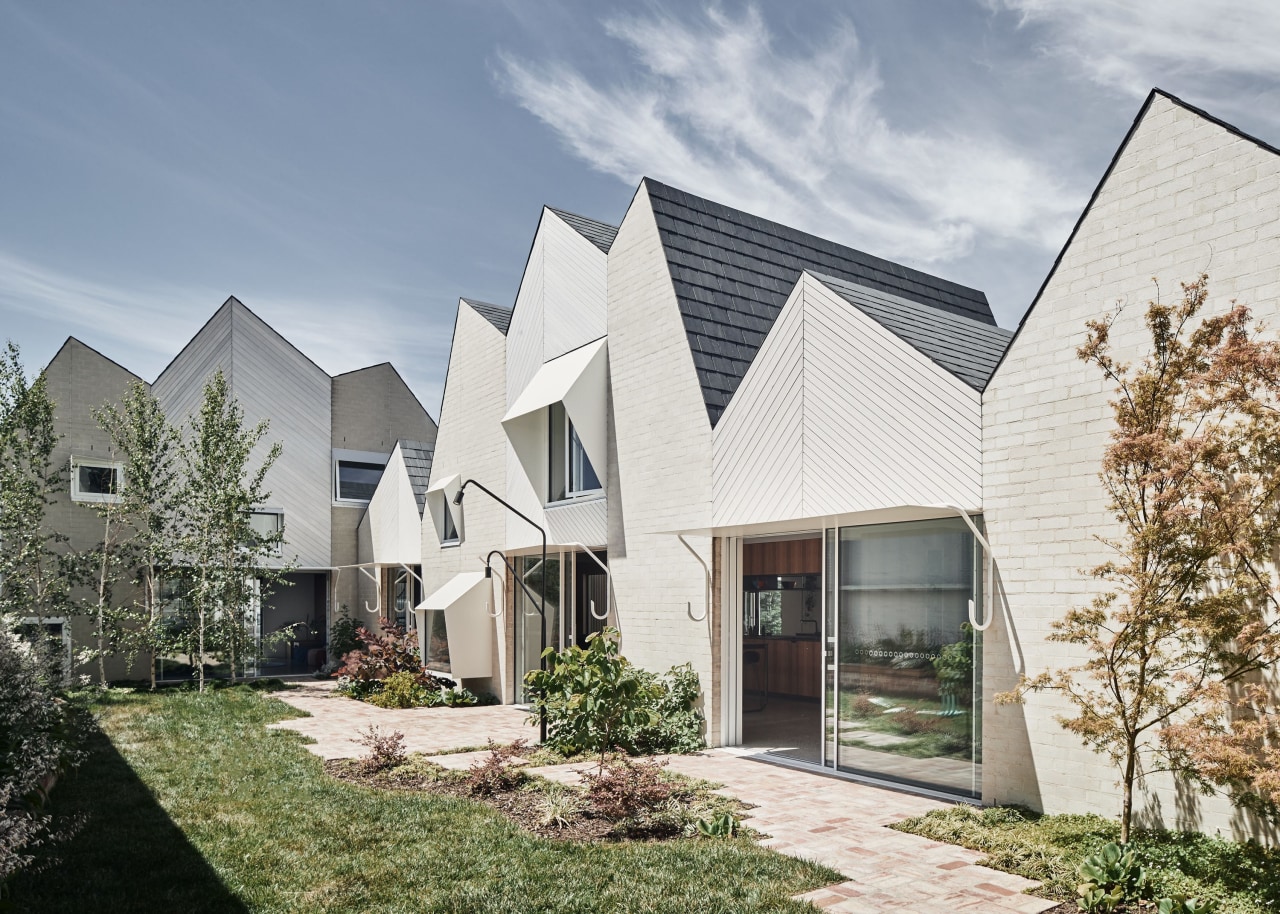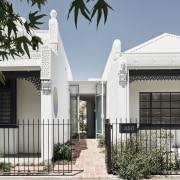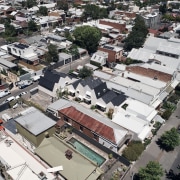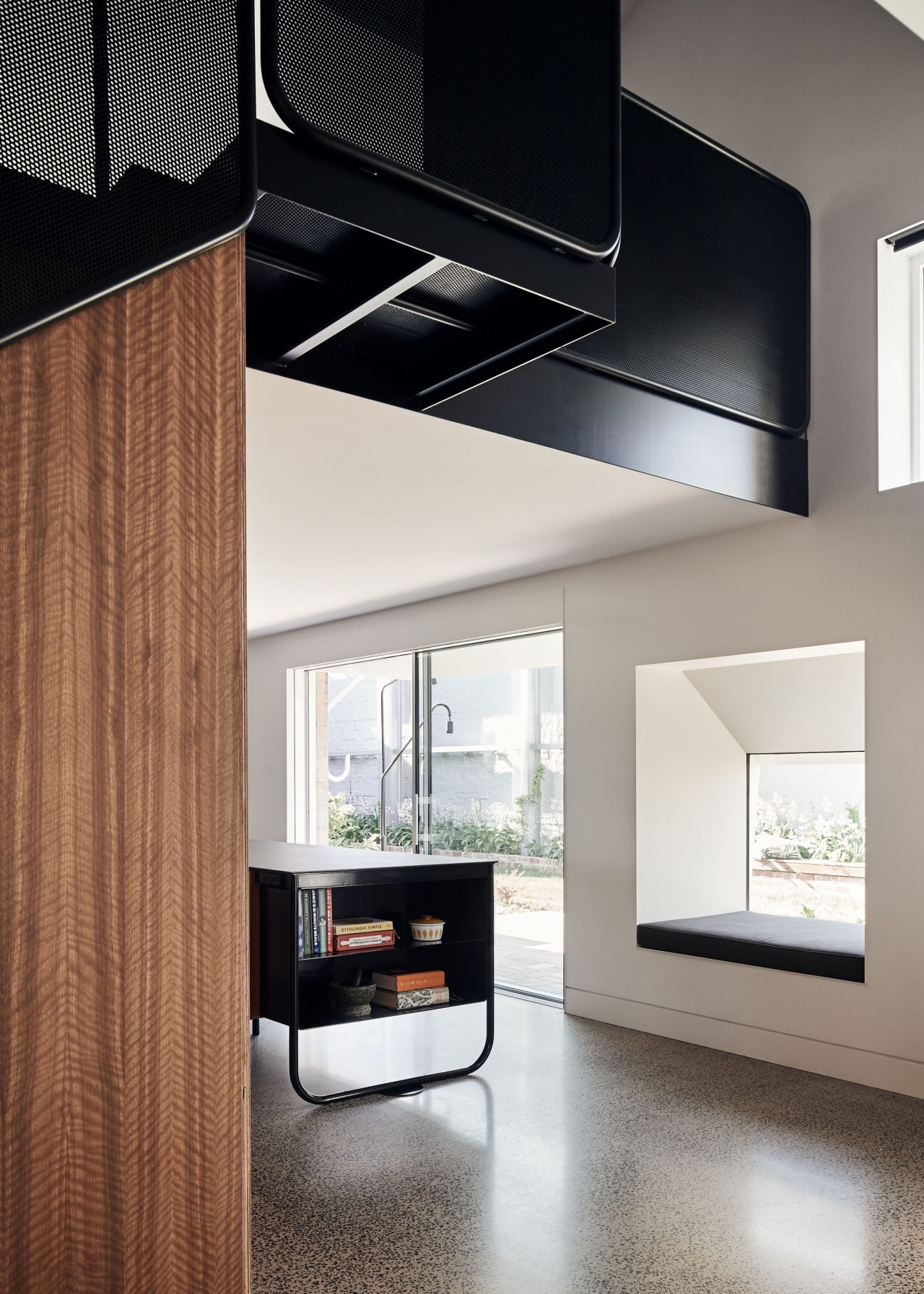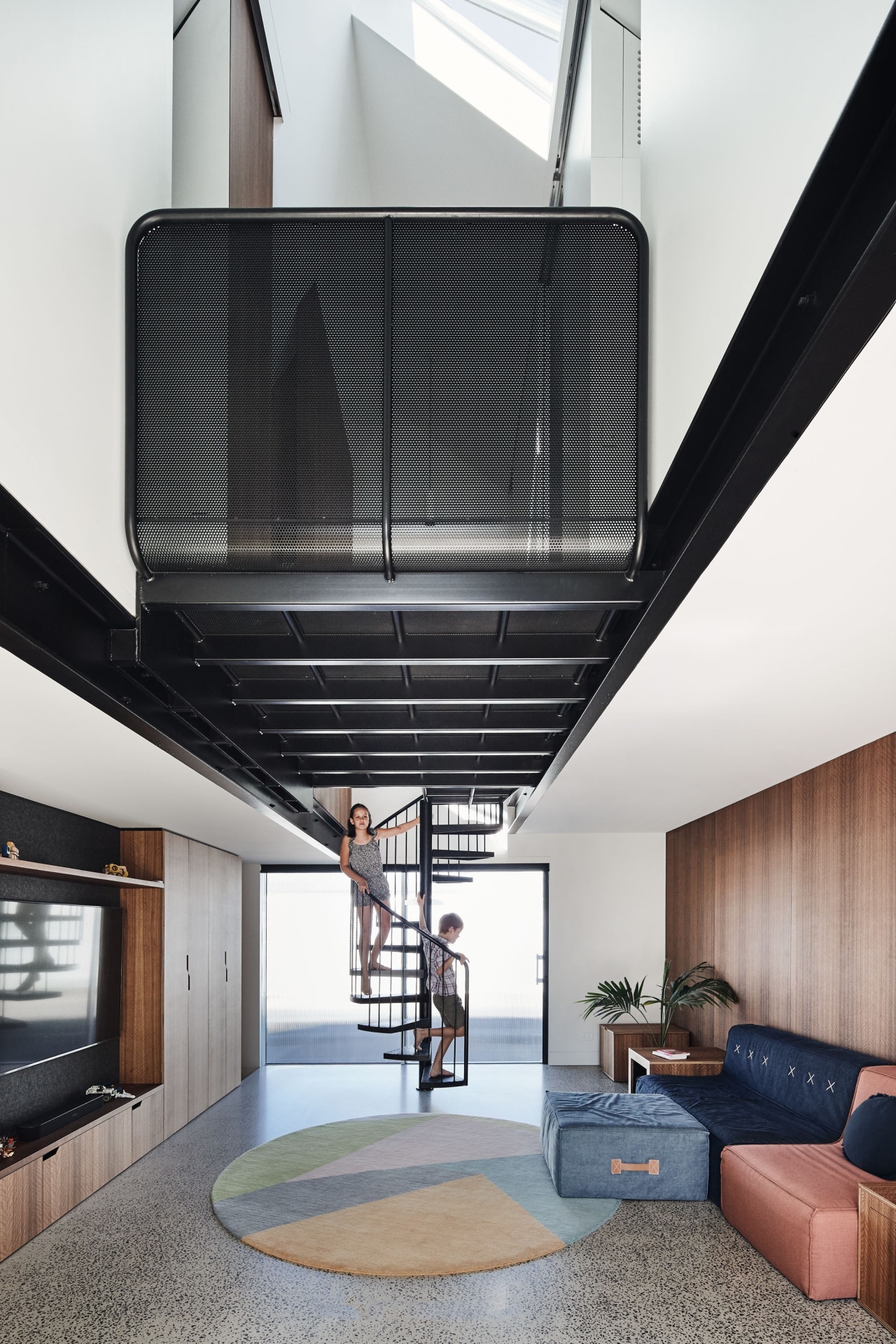Mountain range in the city
Cleaning the gutters on this home might require climbing rope and crampons – okay, joking aside, this inner-city home has a distinctly alpine profile and while it looks like it's for fun, really each roof peak and valley responds to specific elements.
Designed by Austin Maynard Architects
From the architects:
RaeRae is an inner-city family home which incorporates two pre-exisiting terrace houses. A glazed entry, set back between the heritage buildings, unites the two and forms the gateway to new architecture, surprising in lightness and scale.
Unconventional but thoroughly logical, like a German sports car, the beauty of RaeRae’s exterior belies the finely tuned rationalism that generated it.
While first appearances may suggest otherwise, logic, reason and rationality are the cornerstones behind the design. Initially it looks fanciful – like an architectural mountain range – but at its core the house is responsive and strategic.
The mountain roof form, for example, is shaped through context – every rise and fall is tuned to minimise overshadowing and visual bulk, only truly apparent if the home were viewed from above.
The undulating roof is low against abutting gardens to avoid overshadowing, and raised high where the neighbours have built against the boundary. The mountain profile was achieved by creating height in various areas, both internally and externally.
The same rational principle applies to the exterior materiality. The considerable weight of brickwork always meets the ground, and is never elevated. Wherever there is an opening, there is timber above, resulting in minimal structural steel, significantly reducing cost while also adding pattern and beauty. It is a strategic way of thinking about structure which ensures the budget is met, yet also leads to a diverse aesthetic.
Similarly, the window locations, appearing randomly placed on the exterior, internally undertake specific spatial functions.
At the rear of the block, the unusually wide laneway has a transitional emergence, lots of garages, extensions, subdivisions and newer builds that have capitalised on the property's dual frontage aspect.
Rather than close off to the street, the design opens to this public space. With no heritage constraints to the frontage, the aim was to engage with the street and the neighbours utilising direct access, large openings and windows.
RaeRae was specifically built along the southern boundary to take full advantage of the northern aspect. Living spaces face the sunny northern garden, while storage and services are to the south.
Reorienting the home along the southern boundary maximises passive solar gain and ensures a sunny garden with minimal shadow, ideal for Melbourne’s climate.
All windows are double-glazed with fixed external awnings to provide shade. A large water tank has been buried within the garden, while roof water is captured and reused to flush toilets and water the garden.
The home is also designed to be durable and long lasting. High quality and highly sustainable materials are used throughout.
Beyond its obvious aesthetic qualities, slate roofing offers a robust surface with a lengthy life span and no maintenance. Plus, slate is a natural material and it doesn’t go through a resource-hungry manufacturing process. And because it’s not full of chemicals, it can be re-used.
Raerae is also very much a product of what the owners wanted on the inside and the prominent master bedroom placement offers good example. The master bedroom at RaeRae is an example of this. Instead of the usual request for a parental retreat, a quiet place far away from active family areas, the owners asked for the main bedroom to be at the very centre of the house. Here, located directly above the kitchen, the parents have the opportunity to directly engage with the activity below, or close the large sliding doors to create a private space.
The children also have their own versatile areas. The rumpus room opens out to the garden and also to the street, future-proofed to become self-contained with its own direct street access. Behind is a dedicated craft/study area, designed to allow for both maximum creative mess and quiet secluded revision.
A spiral staircase leads up to a bathroom and three bedrooms, with a bright colour carpet chosen by each child. The perforated steel landing connects the bedrooms and bridges a double height void.
Credit list
Architect
Engineer
Interior styling
Energy consultant
External wall cladding
Story by: Trendsideas
Photography by: Peter Bennetts
Home kitchen bathroom commercial design
Classic looks, contemporary efficiency
Diving into nature
Personality plus
